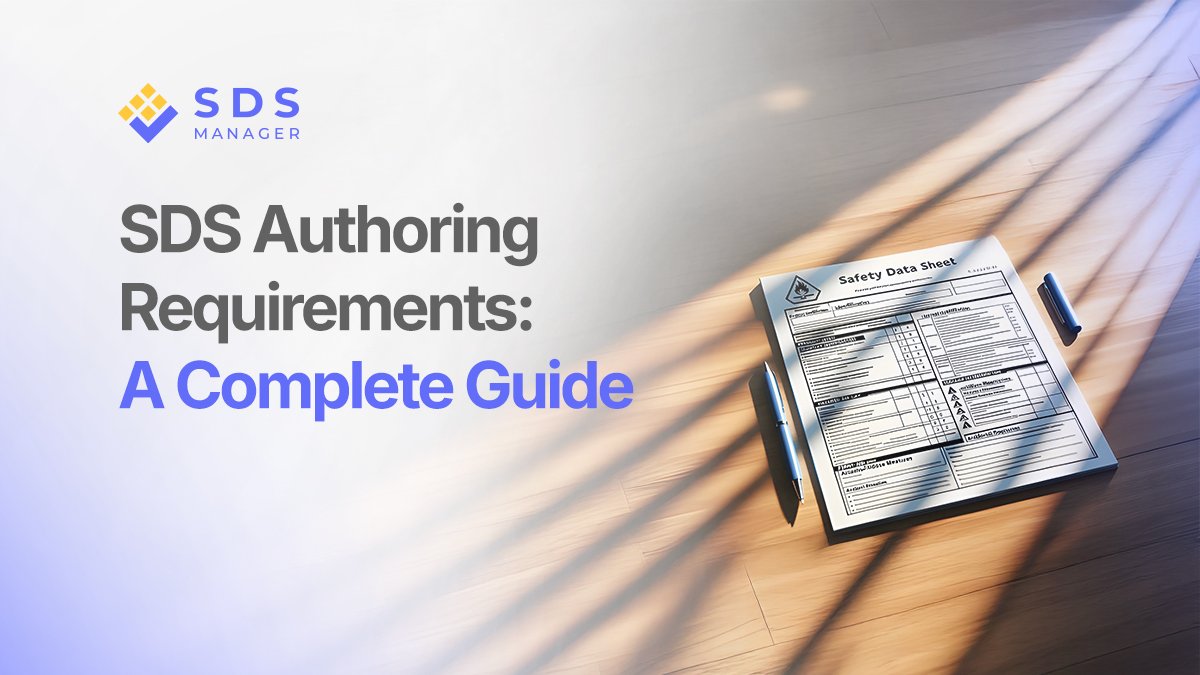

Safety Data Sheets (SDS) are essential documents that communicate hazard information about chemical substances and mixtures used in workplaces. To create compliant and accurate SDS documents, companies must follow specific SDS authoring requirements.
This guide explains these SDS authoring requirements in simple terms, highlighting what businesses need to know.
What Are the Requirements?
SDS authoring requirements are the rules and standards that guide how Safety Data Sheets must be written, formatted, and updated. These rules ensure that everyone has reliable and consistent information about chemical products.
The requirements include:
- A set structure with 16 mandatory sections.
- Use of clear and easy-to-understand language.
- Accurate hazard classification and labeling information.
- Regular updates when new data becomes available.
Who Sets the SDS Authoring Requirements?
In Canada, SDS authoring requirements are enforced under the Workplace Hazardous Materials Information System (WHMIS). The system is aligned with the Globally Harmonized System (GHS), ensuring consistent hazard communication. Companies exporting or importing chemicals may also need to consider international regulations.
The Mandatory 16-Section Structure
All compliant safety data sheets must follow a standardized GHS 16-section format. This consistent structure helps workers and emergency responders locate critical information quickly.
Sections 1-4: Product and Hazard Information
Section 1 identifies the chemical product and supplier contact details. Section 2 presents hazard classifications with appropriate warning labels. Section 3 describes the chemical composition, and Section 4 outlines first-aid procedures for exposure incidents.
Sections 5-8: Handling and Protection
These sections detail firefighting methods, spill response procedures, safe handling practices, and required personal protective equipment for workers.
Sections 9-11: Chemical Characteristics
Section 9 lists physical properties like boiling point and flash point. Section 10 addresses stability concerns and reactive hazards. Section 11 provides toxicological data relevant to health effects.
Sections 12-16: Additional Information
The remaining sections cover environmental impact, disposal guidance, shipping classifications, regulatory references, and supplementary details.
Proper Skills for SDS Authoring
Technical Knowledge
Authors should have a strong understanding of chemistry and toxicology. This helps them classify substances correctly and provide accurate safety details.
Attention to Detail
Even small mistakes, like wrong CAS numbers or precaution statements, can cause safety risks. Accuracy is critical in every section of the SDS.
Clear Communication
SDS documents must be easy for workers to understand. Authors should balance technical accuracy with simple, clear language.
Reliable Data Collection
Proper SDS authoring depends on trusted information. Authors should gather data from manufacturers, research studies, databases, and test results, always cross-checking for accuracy.
Hazard Classification
Following GHS rules, authors must carefully review all safety data and apply the correct hazard and precautionary statements. This ensures workers get the right safety guidance and protection.
Why Compliance Matters
Meeting SDS authoring requirements is not just about ticking boxes. It directly impacts workplace safety and legal compliance. Failure to comply can result in:
- Employee injuries or illnesses.
- Regulatory penalties and fines.
- Product distribution delays.
- Loss of trust from customers and partners.
By carefully following SDS authoring requirements, businesses protect people and maintain compliance.
Best Practices for SDS Authoring
To stay compliant and efficient, businesses should:
- Use professional SDS authoring tools. For companies managing multiple products, digital SDS authoring saves time, improves accuracy, and reduces compliance risks.
- Always double-check data using reliable sources to avoid mistakes.
- Have experts like chemists and compliance specialists review SDS documents before release.
- Regularly review SDS documents to stay current with regulation changes and product updates.
- Always stay updated on WHMIS, GHS, and industry best practices.
Following these steps ensures that all SDS authoring requirements are met consistently.
Conclusion
Understanding and meeting SDS authoring requirements is important for workplace safety, legal compliance, and smooth business operations.
With 16 mandatory sections, clear formatting rules, and WHMIS oversight, every SDS must be carefully prepared. While manual authoring can be challenging, digital solutions provide speed, accuracy, and reliability.